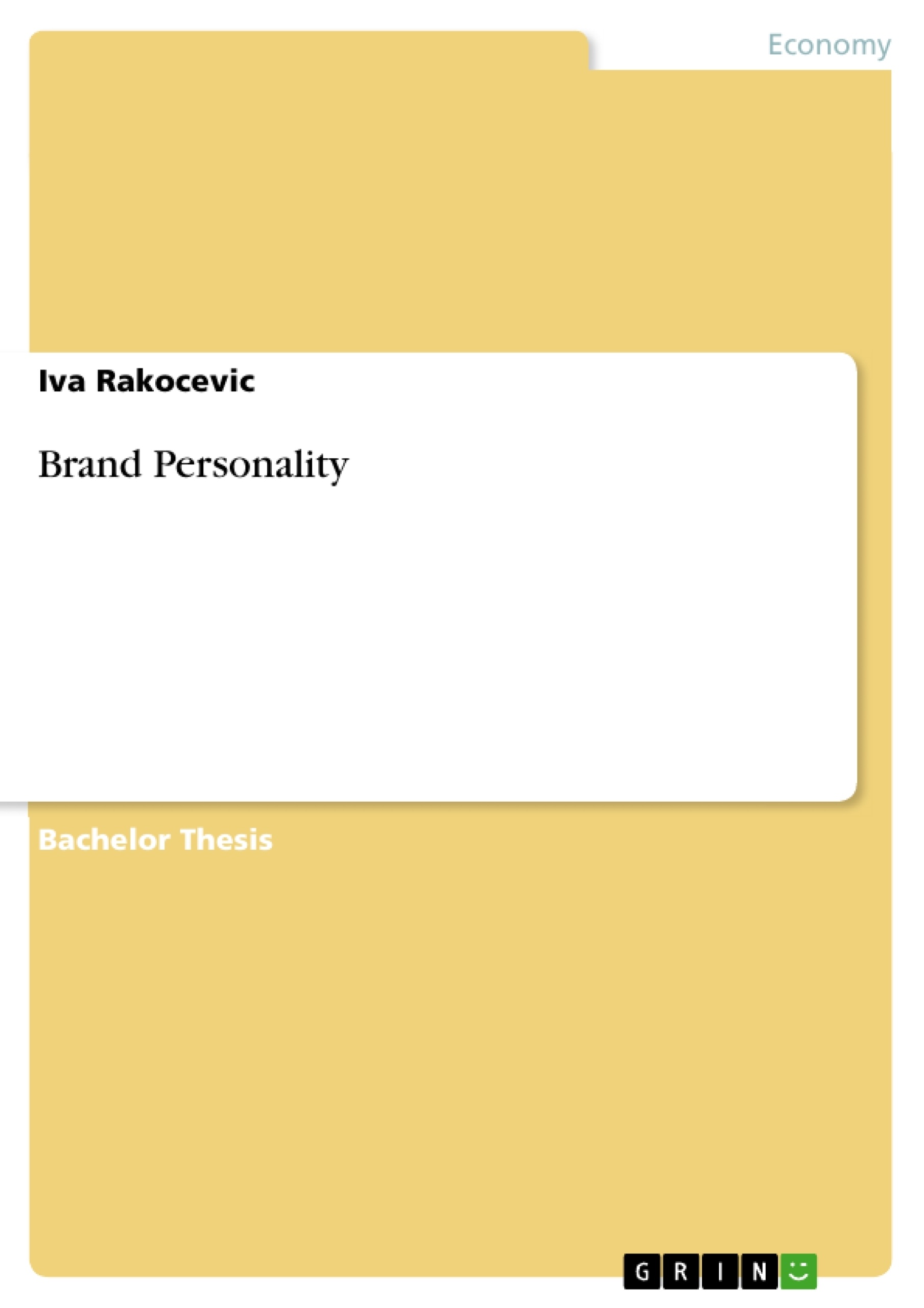This bachelor thesis should give an overview of brand personality, as an important part of
branding. Going through historical periods before the 20th century up to present day, I will try
to present the development of brand personality through different phases. The main focus of
this bachelor thesis will be on Aakers model of brand personality, as she was the first author
who developed brand personality scales.
Inhaltsverzeichnis (Table of Contents)
- Introduction – The purpose of the thesis - Definitions
- Introduction
- Definition of Brand Personality
- The existence of brands before 20th century
- Early Bronze: 2250 - 2000 BCE - The Indus Valley
- The Middle Bronze Age: 2000-1500 BCE- Shang China
- The Late Bronze Age: 1500-1000 BCE - Cyprus
- The Iron Age Revolution: 1000-500 BCE - Tyre
- The Iron Age: Greece: 825-336 BCE
- Brands in modern 20th and 21st century
- Jenifer Aaker and her Five Factor model
- Kapferer's Brand Identity
- Joseph Plummer
- Keller
- New model of brand personality
- Brand Personality in every day life
- Listing
- List of Illustrations
- List of References
Zielsetzung und Themenschwerpunkte (Objectives and Key Themes)
This bachelor thesis aims to provide an overview of brand personality as an important element of branding. By examining historical periods from before the 20th century to the present day, it seeks to present the development of brand personality through different phases. The main focus of the thesis is on Aaker's model of brand personality, as she was the first author to develop brand personality scales.
- The development of brand personality over time
- The importance of brand personality in branding
- The origins and evolution of "proto-brands"
- The role of information and imagery in branding
- The application of brand personality scales in marketing research
Zusammenfassung der Kapitel (Chapter Summaries)
- Introduction – The purpose of the thesis - Definitions: This chapter introduces the concept of brand personality and its significance within the field of branding. It also presents a working definition of brand personality.
- The existence of brands before 20th century: This chapter delves into the historical development of brands, tracing their presence from ancient civilizations through the Iron Age. It examines key characteristics of "proto-brands" across different historical periods and their evolution in conveying information about quality and origin.
- Early Bronze: 2250 - 2000 BCE - The Indus Valley: This section explores the emergence of brands in the Indus Valley, specifically focusing on the use of seals by merchants to mark their wares.
- The Middle Bronze Age: 2000-1500 BCE- Shang China: This section investigates the use of "zu" crests in Shang China as a form of brand identity, representing family groups and their economic activities.
- The Late Bronze Age: 1500-1000 BCE - Cyprus: This section examines the role of copper from Cyprus as a symbol of status and value, highlighting the association of a raw material with a specific geographic origin and inherent quality.
- The Iron Age Revolution: 1000-500 BCE - Tyre: This section focuses on the city of Tyre, a major center for trade in the Iron Age, and how the brand of Melquart (a god) utilized imagery to convey power and status.
- The Iron Age: Greece: 825-336 BCE: This section examines the development of a market-oriented culture in Archaic Greece, and the use of branding to distinguish between entrepreneurs. It highlights the importance of imagery in branding as a tool for conveying information about origin and quality.
Schlüsselwörter (Keywords)
This thesis focuses on the concept of brand personality, its historical evolution, and its application in modern marketing research. Key terms include brand personality, branding, proto-brands, Aaker's model of brand personality, brand personality scales, historical development, marketing research, and consumer preference.
- Quote paper
- Iva Rakocevic (Author), 2011, Brand Personality, Munich, GRIN Verlag, https://www.grin.com/document/179611



